By Susanna Gibbons, CFA
Ah, Lake Wobegon. Where all the women are strong, all the men are good-looking, and all the children are above average. Sounds a lot like the pursuit of active management, doesn’t it? The belief that we can find investment managers that are top performers drives everything. In a 1991 article, The Arithmetic of Active Management, William Sharpe basically chides us for acting as though we can all be above average. He notes: “Properly measured, the average actively managed dollar must underperform the average passively managed dollar, net of costs. Empirical analyses that appear to refute this principle are guilty of improper measurement.” (Sharpe, 1991)
Most of the academic research on the performance of investment managers is completely consistent with this notion and demonstrates that there is very little persistence in performance over time. There is some variability in results when viewed over the short term (generally less than a year), but by and large, performance is strongly mean-reverting. (Luckoff, 2010) This should not come as a surprise to anyone in the active management world – it is extraordinarily difficult to consistently beat a benchmark, let alone remain in the top quartile or even the top half.
Using a broader range of quantitative measures for selecting asset managers does not really provide additional hope. The Sharpe ratio is among the most widely used measures, and it adjusts historical performance for the excess risk in the portfolio relative to a benchmark. Theoretically, the higher the Sharpe ratio, the more skill the manager has.
Except that the skill purportedly measured by using historical numbers does not translate into future performance. Just as prior period Alpha is not predictive, high Sharpe ratios are also not predictive of future performance. In fact, they aren’t even predictive of continued high Sharpe ratios.
Why, then, do we continue to use these frameworks as a way of identifying which managers to hire? Investment Consultants put enormous effort into managing their approved lists, conducting “searches” for new managers, and in general acting as gatekeepers for asset owners. Recommendations will not include managers without strong three-year track records at a minimum, in spite of the fact that we know these results have little bearing on expected performance going forward.
In fact, it’s even worse than that. There has been some research on the performance of emerging managers, and it consistently shows strong performance – primarily in the first two years. (Aggarwal & Jorion, 2008) (Preqin, 2013) (Liu, Ma, Shi, & Wang, 2017) According to Aggarwal, “each additional year of age decreases performance by 48 basis points, on average”. The best performance from these managers comes before consultants will recommend them. We are knowingly, willfully leaving performance on the table.
And all of this begs the question: where did the three-year track record come from in the first place? I stumbled across an article recently that suggests that, essentially, the investment business-backed into it because it needed enough data points to calculate Alpha and Sharpe Ratios. In “Are 3-Year Track Records meaningful?” Corey Hoffstein argues that in statistical analysis, 30 samples is the minimum needed to rely on a normal distribution – a requirement for meaningful Alpha and Sharpe calculations. A 3-year track record gives investors the bare minimum required for a (theoretically) meaningful calculation. (Newfound Research LLC, 2016)
The problem, though, is that monthly data should not really be annualized as most consultants do – to multiply by the square root of time. This method would be fine in the absence of serial correlation, but stock returns have a great deal of serial correlation (momentum), so the calculation actually overstates the Sharpe ratio by as much as 65%. (Lo, 2002)
Okay, so we have to have a three-year track record because that’s the minimum amount of data needed for a calculation we know will be wrong, using time series that we have determined have no ability to identify which managers are going to outperform in the future. We then take the three-year requirement and establish a barrier to keep out managers who actually do have a likelihood of outperforming. That’s our framework for identifying excellence. Yikes.
The tools that have evolved over the years to help asset owners make really complex decisions are actually working against their best interest. These tools have had a disproportionate impact on women and people of color. The barriers to starting a new investment fund are high, and the likelihood of being able to keep an emerging business going for three years if you do not already come from a position of privilege is discouragingly low. Those three years have nothing to do with manager performance; they serve only to keep “the unwanted” out of the business, and asset owners are paying the price. Dismantling any entrenched system is hard, particularly when it has been wrapped in complex formulas and years of accepted practice.
We are well past due to escape from this fanciful world, this Lake Wobegon of investing that never actually existed. However risky it feels to step into the real world, it is time.
References
Aggarwal, R., & Jorion, P. (2008). The Performance of Emerging Hedge Fund Managers (draft). Unpublished.
Hendicks, D., Patel, J., & Zeckhauser, R. (1993). Hot Hands in mutual funds: Short-run persistence of relative performance. Journal of Finance 48, 93-130.
Liu, S., Ma, J., Shi, H., & Wang, C. (2017). The Performance of Emerging Managers and Funds. Minneapolis: Carlson Finance & Consulting Lab.
Lo, A. W. (2002). The Statistics of Sharpe Ratios. Financial Analysts Journal Vol. 58, No. 4, 36-52.
Luckoff, P. (2010). Mutual Fund Performance and Performance Persistence: The Impact of Funds Flows and Manager Changes. Gabler Verlag.
Newfound Research LLC. (2016). Are 3-Year Track Records Meaningful? Boston, MA: Newfound Research LLC.
Preqin. (2013). The Performance of Emerging Manager Funds. Company Website, Hedge Fund Spotlight.
Sharpe, W. F. (1991). The Arithmetic of Active Management.





